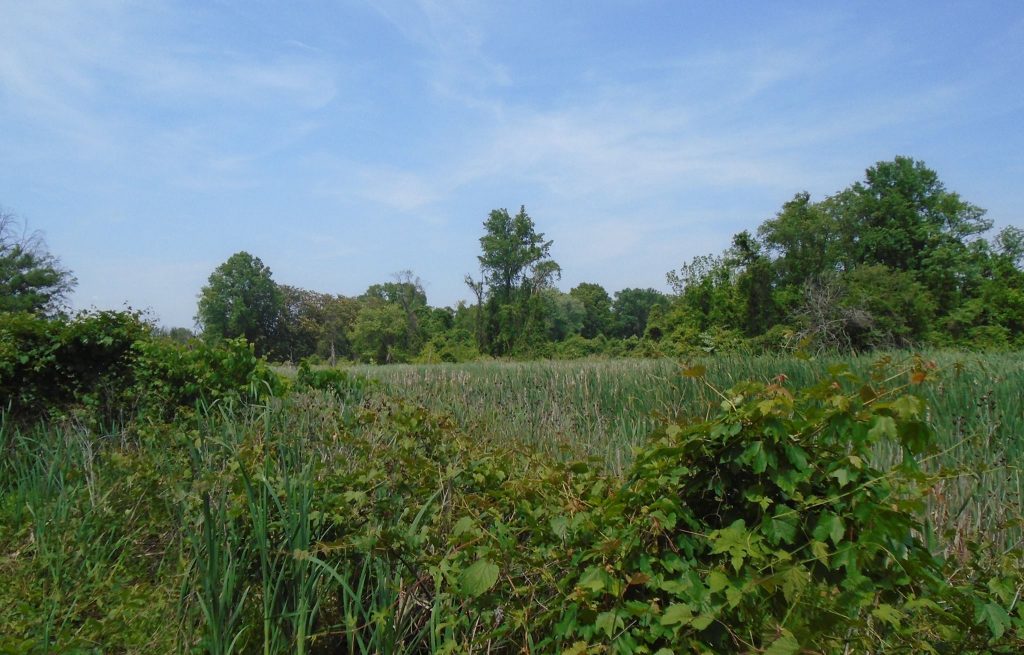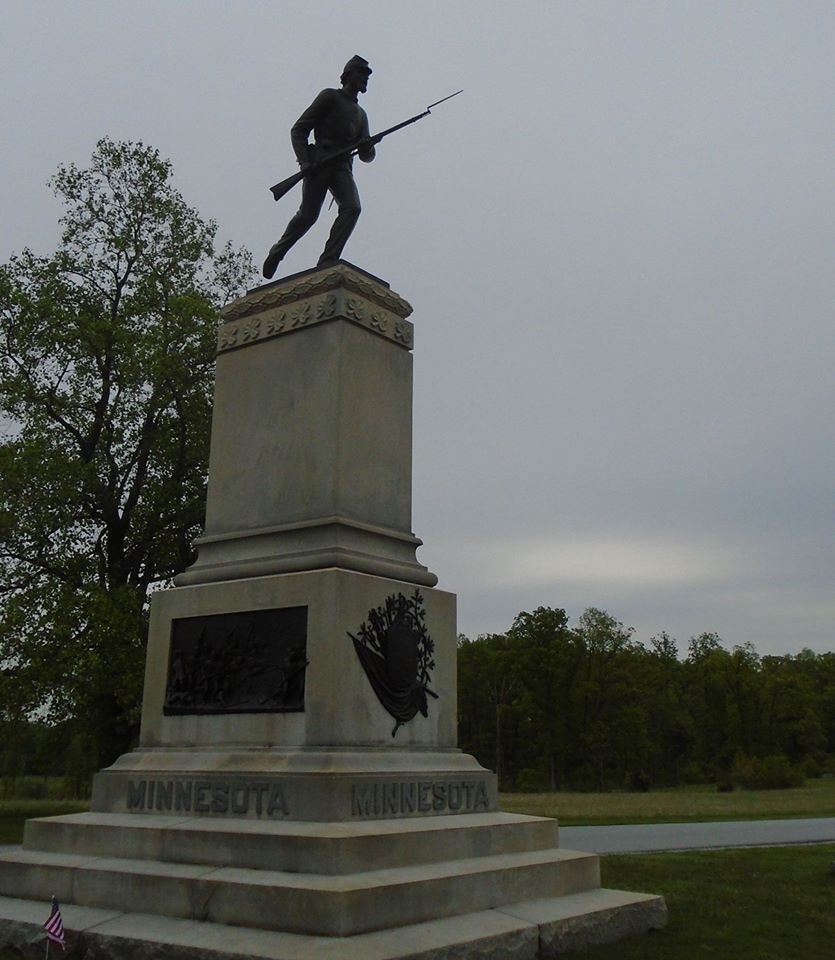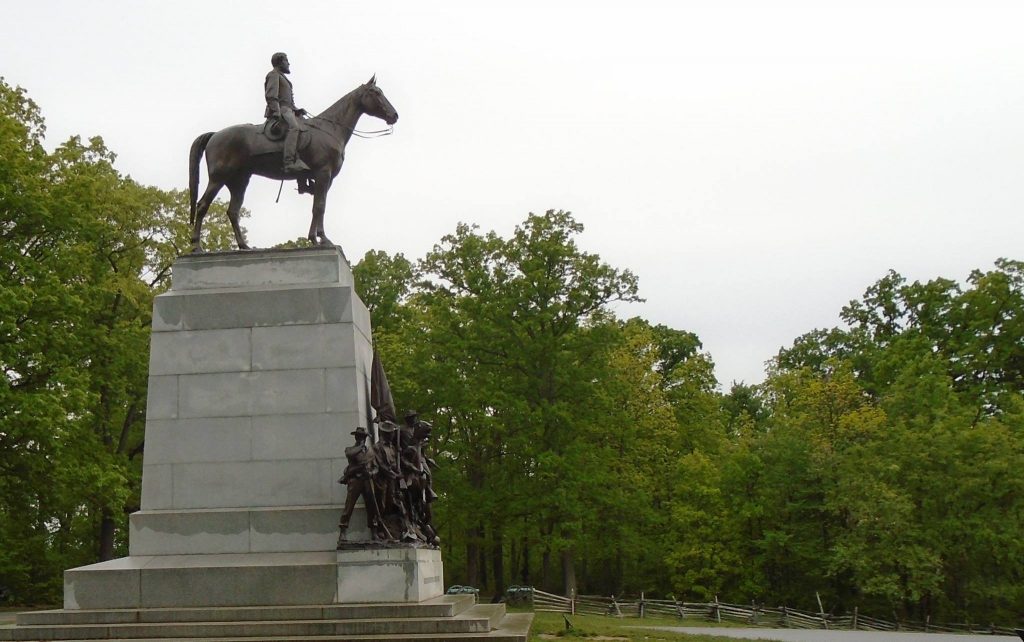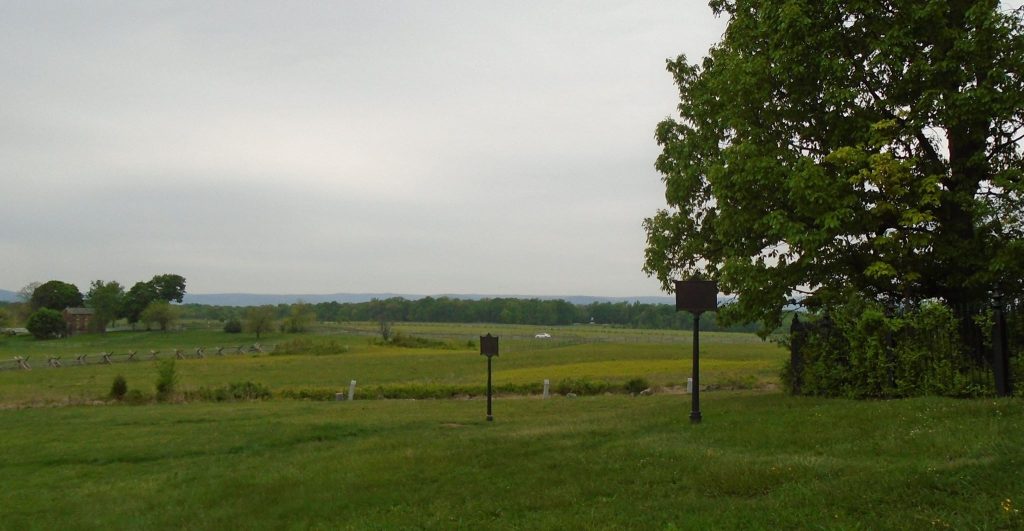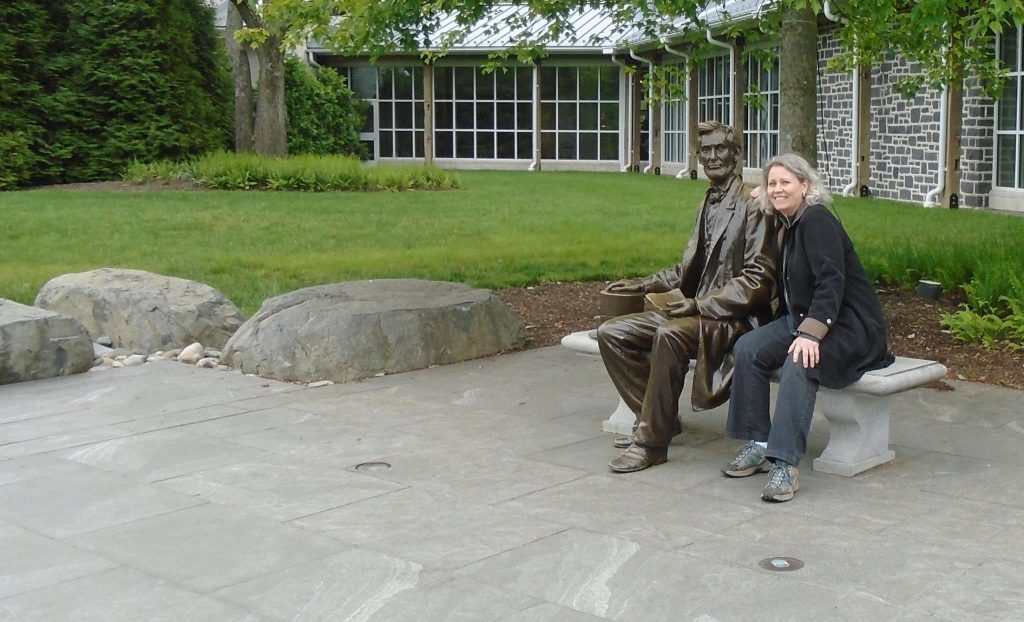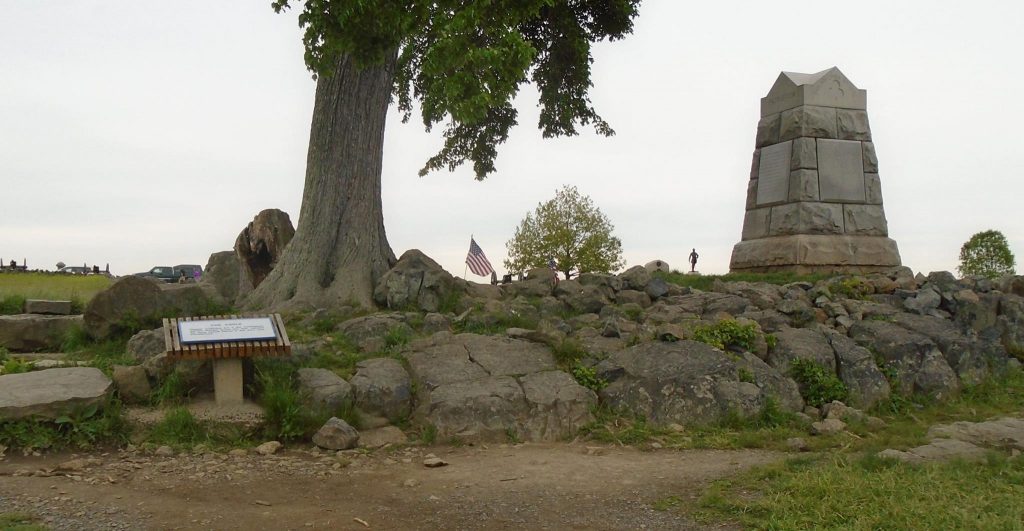
A problem at the farms is that I have no place to sit. It just is not comfortable to sit on rocks or on the ground, not to mention that when you sit on the ground you get closer to the ticks. So I brought an old bench, where I can sit, eat lunch, listen to the water flow. It is a nice shady place to be. Of course, I suppose it will discourage actual work.
Prickly plants on the farms


 Lots of things are prickly or troublesome on my land. Some are useful but annoying.
Lots of things are prickly or troublesome on my land. Some are useful but annoying.
A good example are the blackberries. They proliferate anyplace there is a disturbance and sometimes seem to have a malevolent intelligence. As you push through them, the branches whip backwards, hitting you in the back of the head and sometimes knocking off your hat. But blackberries are good in that they provide significant food for wildlife and habitat. You can eat them yourself. They taste good but they are small and you have to take a lot of thorns for your meager meal.
My last picture is a tree of heaven (Ailanthus altissima). This is nothing but trouble with no redeeming characteristics in a rural setting. There are some uses in degraded urban environments, since they grow fast and can grow almost anywhere. They are nearly impossible to eradicate. If you chop them down, they grow back more vigorously. There is no effective method I have ever heard about that does not require chemicals and even with this you cannot win a final victory. I have been spraying these things for years and go after them whenever I see them.
I was indolent with the one in the picture. I noticed the clump in the middle of the wildlife plot last year, but I didn’t have my sprayer with me so I left it. I went back last week. It had growing bigger and thicker and about a dozen little ones had sprouted as far as 100 yards away. I think I got most of them, but I am sure they will be back.
Simple soil solutions




 Went down U.S. 29 to see Simple Soil Solutions, a farm near Gladstone, VA where they are rebuilding soils through progressive grazing and then stopped at Madison, VA for a meeting with local tree farmers.
Went down U.S. 29 to see Simple Soil Solutions, a farm near Gladstone, VA where they are rebuilding soils through progressive grazing and then stopped at Madison, VA for a meeting with local tree farmers.
I always enjoy the drive down U.S. 29. It is very pretty with the Blue Ridge on one side and rolling hills on the other. There is usually not too much traffic. I used to drive that way regularly when Mariza Matel went to UVA (I am very proud that she graduated from Thomas Jefferson’s university) but now I have less cause to do it.
My first picture shows Madison, Virginia. It has the usual Civil War monument in front of the public red-brick public buildings.
Next is a road sign I noticed describing the destruction caused by the remains of Hurricane Camile in 1969. They got more than 25 inches of rain in a few hours. 125 people were killed in Virginia when those rains flooded mountain streams and rivers. Note the the Hurricane hit Louisiana and Mississippi with the highest hurricane winds ever recorded to hit American land and was still powerful enough to cause havoc in Virginia.
The other two pictures are from the Simple Soil Solutions farm.

Tree farming on acreage big & small

You cannot be a true tree farmer on an acreage small enough that you can just take care of it yourself using hand tools. On the other hand, it is profoundly gratifying to work with your trees on small acreages, where your efforts make a difference. I have developed a compromise. Most of my trees are out of my hands. I will manage the land, but do little in the way of personal work. But I have a few areas special to me. They are small enough that my muscles and primitive tools and diminishing muscle can be effective, but big enough to be significant.


The first picture show the longleaf. They were planted in 2012 after the land was burned. It is a nice plantation. My work consists currently of whacking down hardwood and loblolly competition. It is a little sad for me. Anywhere else, even very close, I would welcome these volunteers. I have personally knocked down scores, maybe hundreds, and still they come. Notice the woods in back. Those are loblolly and they do proliferate.

The next picture shows the longleaf and the loblolly we planted. They are the same age, but notice how much taller the loblolly of the left. Loblolly grows faster for the first 20 years. At around 20, the longleaf and loblolly are about the same size. After that, the longleaf are bigger. But the longleaf cannot compete well in the first few years and would be eliminated absent fire or somebody like me wielding a machete. We will burn underneath the trees probably next year.
Next is the grass and wildflowers. The red flower is a butterfly weed, important to pollinators.
The last picture is inside the forest you see in the background. This is a stream management zone. We want to protect the water and so we do not cut. It is a well-evolved ecosystem. Notice the large tree near the right of the picture. That is a loblolly pine probably around fifty years old. It grew when this was open. Since then, the forest floor has become shaded (notice the shade-loving ferns) and pines will not grow there anymore. That tree may live another 100 years, but unless there is some natural or man-made disaster, none of its offspring will grow anywhere nearby. The new trees are mostly maple. Maple seed fly in the wind and can reach far. I did not see any beech. They will establish only later.
Don’t blame global warming

The problem with blaming global warming for everything is that it discourages better management practices that could be done, should be done to make our forests healthier. A good example are pine beetles. They are a problem and have been for years. They have become worse in recent times, and the facile explanation is global warming.
This article tells about how better management techniques slow the beetles. “As Dr Hood reports in Ecological Applications, the death toll was 50% in the control zone, 39% in the area intentionally burned, 14% in the one both thinned and burned, and nearly zero where it was merely thinned.”
Pine beetles are a threat in our Southern forests too. We know that the beetles are slow and stupid. When the tree are far enough apart, the beetles have trouble preying on trees and birds have an easier time preying on the beetles. That is a big reason we thin. Western forests are more often managed by the Forest Service and they more often are victims of misguided activists “protectors” who object to thinning or burning. As a result of the activists the forests are destroyed by insect and burned disastrously instead of in a better planned way.
So much of the destruction of Western forests is causes not in spite of the best efforts of activists, but because of them. Don’t blame global warming.
Reference
Other blog posts
Fire in Texas oak openings
Burning Questions
Setting the woods on fire
Burn the brush but save the soil
SITES a LEED for landscape
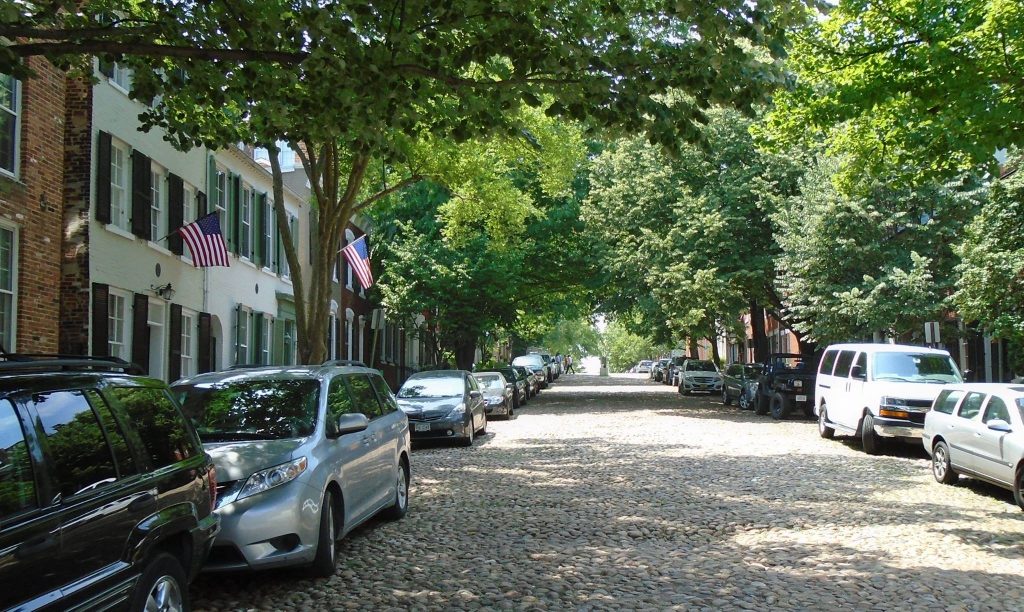
It is not the destination; it is the journey. That makes sense in the figurative way and today literally when I rode my bike down to the SITES event in Alexandria. We went to Alexandria a lot when I first came into the FS, but I go there rarely today and I have never gone all the way on the bike trail.
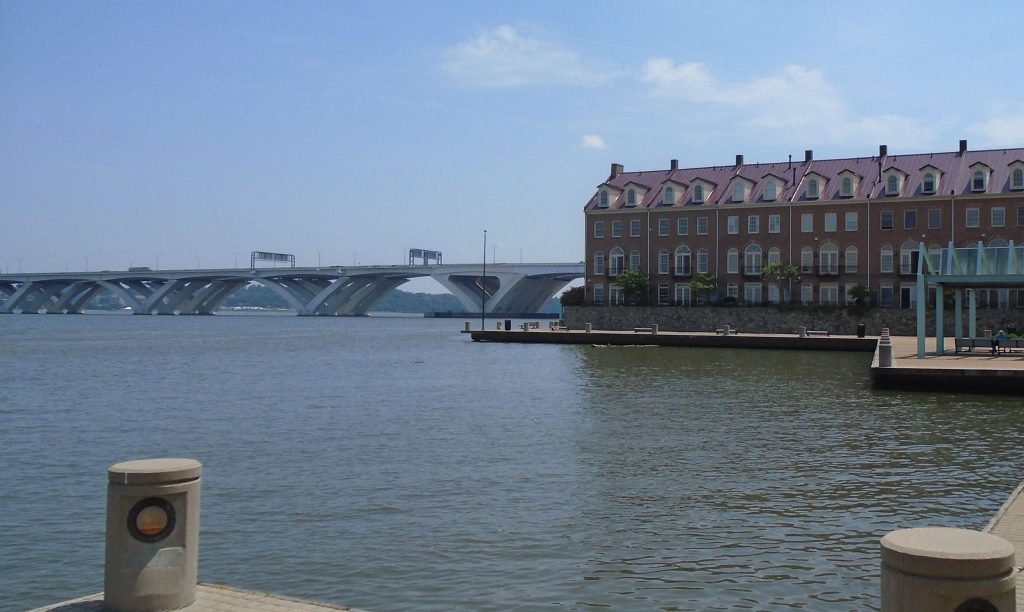
The bike trail journey was cool. You take the W& OD until it merge with the Four-Mile Run trail, which then turns into the Mount Vernon Trail. You have to leave the bike trails a little in the town of Alexandria.

The first part was very familiar, following my quotidian commute at least as far as FSI. The next part was familiar. I had been down many times, but not regularly. That part went as far as where Four Mile Creek enters the Potomac. The last part was new to me but not strange. I had been near driving, but not on the bike. The one-way distance was about sixteen miles. This was our first summer-like day, so it was sort of hot, but it was nice to sweat.
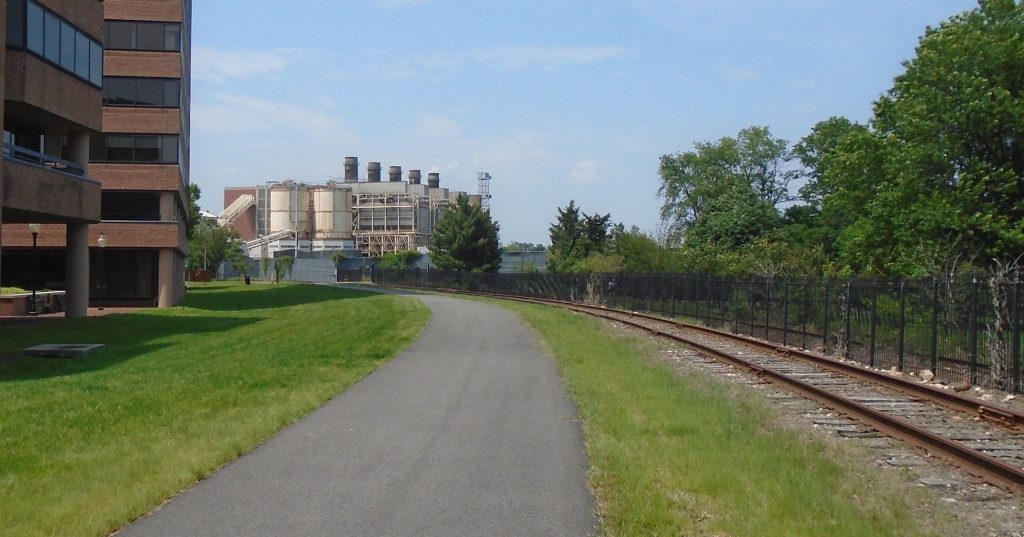
My first picture shows a cobble stone street in Alexandria. Very picturesque but hard on cars and impossible with bikes. I took a picture but avoided it. Next shows the Woodrow Wilson Bridge and the southern terminus of the trail I had to cut west to get to the meeting site for the SITES. Alexandria has gentrified and the old factories are now bars, restaurants and lofts.
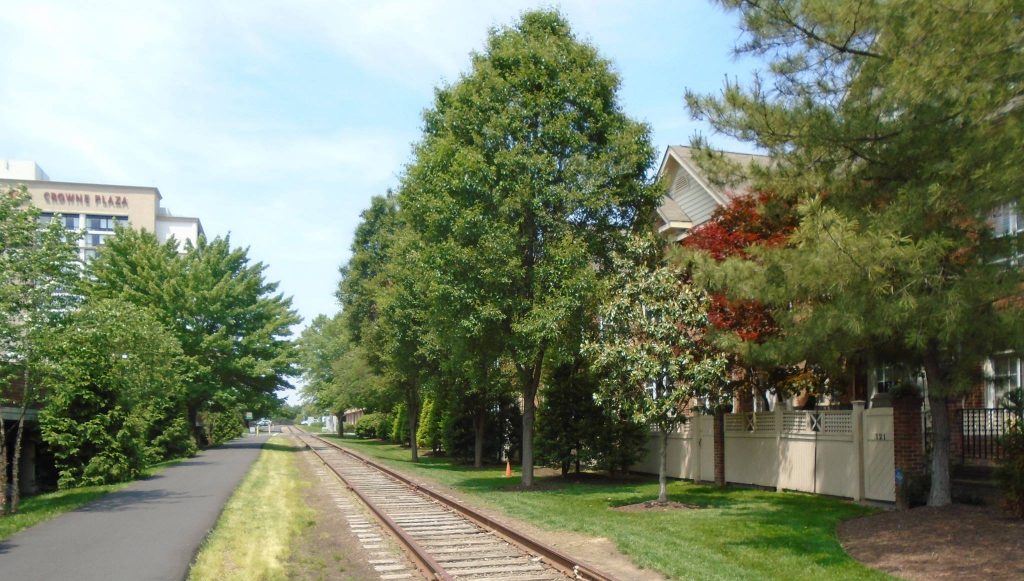
You see that in picture #3. The forth picture is the bike train going up to the old Potomac River Power Plant. It was a coal burning station that polluted the nations capital. It shut down in 2012. Now that it is closed, we see it more fondly. Picture # 5 shows the bike trail tracks and condos. The tracks used to carry trains loaded with coal for the power plant. They run no more and now the tracks are just interesting and quiet enough that you can have a high-priced apartment on the “wrong side of the tracks.” The penultimate picture shows a cattail marsh near the Potomac and finally is the bike trail in a typical section.
Why some people are not poor
The big question is not why some people are still poor but why today most are not. The world before 1750 was uniformly poor and miserable, a long dark age punctuated by a ephemeral points of light, enough to give humanity hope and a taste of truth and beauty, but never enough to sustain prosperity.
What happened around the middle of the 18th century to change this monotonously grim calculus?
As the author writes, “What enriched the modern world wasn’t capital stolen from workers or capital virtuously saved, nor was it institutions for routinely accumulating it…
“…The capital became productive because of ideas for betterment—ideas enacted by a country carpenter or a boy telegrapher or a teenage Seattle computer whiz…”
What happened was that a system developed that decentralized decision-making and spread incentives to a larger number of people. This greatly increased the total intelligence and innovation available.
““When people ask, ‘Will our children be better off than we are?’ I reply, ‘Yes, but it’s not going to be due to the politicians, but the engineers.’
“I would supplement his remark. It will also come from the businessperson who buys low to sell high, the hairdresser who spots an opportunity for a new shop, the oil roughneck who moves to and from North Dakota with alacrity and all the other commoners who agree to the basic bourgeois deal: Let me seize an opportunity for economic betterment, tested in trade, and I’ll make us all rich.”
Anyway, I saw this woman speak on two occasions now, and it is worth reading what she wrote here. A while back George Clack covered some of what she wrote in his quotations section.
Additional reference
High grading
High-grading involves harvesting the biggest and the best trees. This is attractive because it is most profitable, but it is also attractive because it is easy to confuse it with selective cutting. Over time, high-grading is usually significantly more disruptive than a clear cut. The biggest trees are not always the most mature. On the contrary, the may well be the healthiest and best trees. By removing them, you are taking away the best and leaving the worst.
But you will rarely be criticized for high grading, since you will leave a forest intact. In fact, you might garner praise from urban environmentalists unfamiliar with high-grading.
See this link for reference.
Cities and the future of conservation

Cities are the future of conservation. By 2050, about 80% of the world’s population will live in cities, and the danger is that they will be separated from nature with little appreciation for its complexity. If most people are going to be involved in nature, it will have to be urban nature.

I went over to the Nature Conservancy for a lecture on urban conservation. The first speaker, Pascal Mittermaier, global managing director, cities, talked about the need for green infrastructure in cities. Green infrastructure can be very cost effective and it provides the added benefit of brining nature to the cities. Natural areas can absorb and direct rain, cool the surroundings and protect homes. Building the drainage, running the air conditioning and providing the retaining walls would cost as much, require more maintenance and generally are less attractive. Green infrastructure is not used as much as it could be or should be because it tends to be slower acting and not as completely controlled.
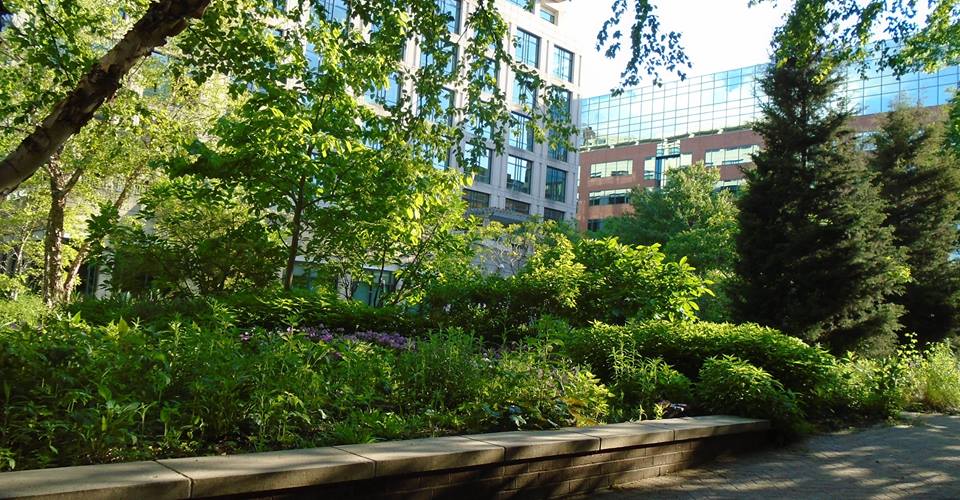
The second speaker, Kahlil Kettering, conservation director for Maryland and DC, built on this talking about storm water. Storm water is a big deal. Forty-three percent of Washington is paved and impervious to rainwater. All this water just runs off, damaging local streams and putting pollution and sediment into the Anacostia and Potomac. Kettering talked about how parking lots can be reconfigured to handle the rainwater that fall on them. He showed a photo of a parking lot in Maryland that used to shed water and now absorbs all of it. These improvements cost money, some of which can be cost-shared from local, state and Federal funds, but it ends up with a much better result. The parking lots are much more attractive and people like to park their cars in the shade of the trees.
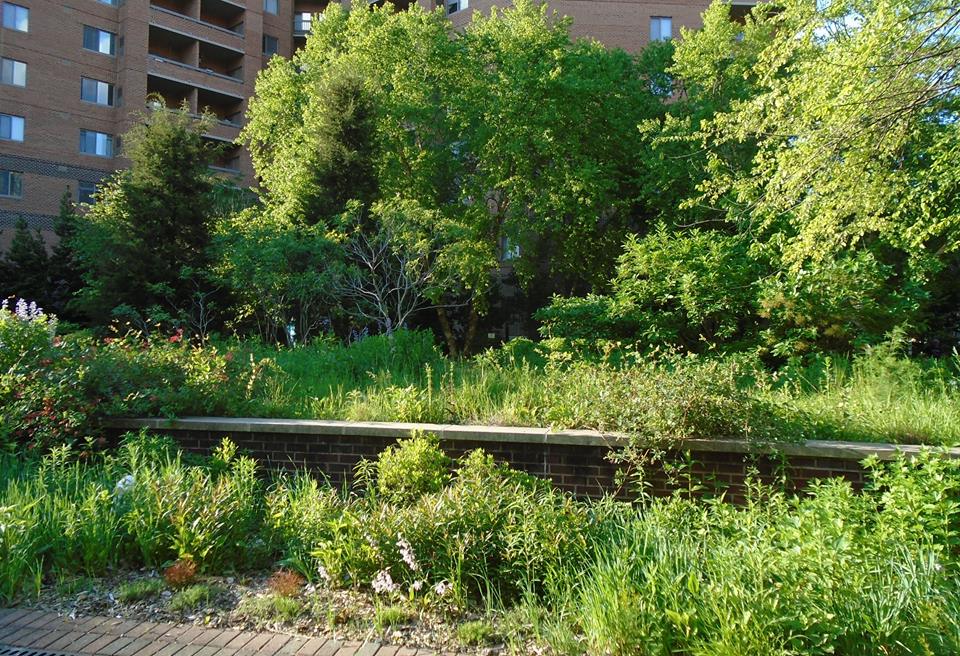
My first picture shows the Nature Conservancy headquarters in Arlington. It is conveniently located near the bike trail and the Balston Metro stop. The other three are the natural garden in back of the building. The plants are native to the Mid-Atlantic region and require little care.
Gettysburg
Stopped off at Gettysburg on the way home. I have been here a few times before, the first time in 1985 with my colleague Rick Roberts, who knew the facts of the battle very well and gave a great commentary. But each time it is moving. So many brave men and each shot or shell that killed or maimed, killed or maimed an American, since we were on both sides. (None of my ancestors was in American during the Civil War, but one of Chrissy’s fought with the Wisconsin regiments.)
My first picture is the “high water mark”. Some Confederates got just about to where the sign shows and then were turned back. This was the culmination of Pickett’s charge. (It should more properly be called Longstreet’s advance, since General James Longstreet was in overall command and Pickett’s division was only one of three participating.) Confederate Brig. Gen. Lewis A. Armistead leading the troops was killed on that spot. Ironically, Armistead’s’ best friend Winfield Scott Hancock, commanded the Union troops. Many of the officers knew each other and had been friends before the war. The end of the charge was effectively the end of the battle, the bloodiest on American soil. Although the war would drag on until April 1865, this battle and the fall of Vicksburg the next day sealed the fate of the South.
12,500 men set off across that field. Only a few successfully covered the 3/4 miles to the high water mark. When they finally retreated only about half were left.
The next picture shows Confederate commanding general Robert E. Lee at the Virginia monument. This is the place where the the attack commenced. The next picture shows the field looking the other direction. The trees at the edge are the clump of trees that Lee told James Longstreet to use as his objective in the attack.
The fourth picture shows Chrissy sitting with a statue of Abraham Lincoln. The battle is famous for its size and consequences, but it is even better known as the place where Lincoln delivered his Gettysburg Address. It is a beautiful and short speech that many of us memorized in HS. It consists of only 272 words and Lincoln wrote it himself. Would that today’s politicians could be so concise and thoughtful.
I had to add the last picture, which shows the monument to the First Minnesota Volunteers. On the second day of the battle, they were ordered to charge oncoming Confederate troops who outnumbered them 5 to 1. The Minnesota volunteers succeeded in blunting the advance but at the cost of an 82% casualty rate. The 47 survivors found themselves in the middle of the battle the next day and were ordered to charge again, this time to blunt Pickett’s charge. They again showed their heroism.

